EXCLUSIVE INTERVIEW | How Does Tiffany Build A New Luxury Retail Experience Through Heavy Investment into Store Renovation?
September 10,2019
тWe put great hope and energy into Beijingтs new store because Chinese consumers expect more and more from us; they are already the most informed consumers in the world.т Philippe Galtie, Global Executive Vice President of Tiffany & Co. (hereinafter referred to as Tiffany) told Luxe.CO.
Tiffany's largest boutique in China was unveiled at the China World Mall, Beijing. The new store, with a total area of 500 square meters across two floors, has an appearance associated with Tiffanyтs global flagship store in the film "Breakfast at Tiffany's" .
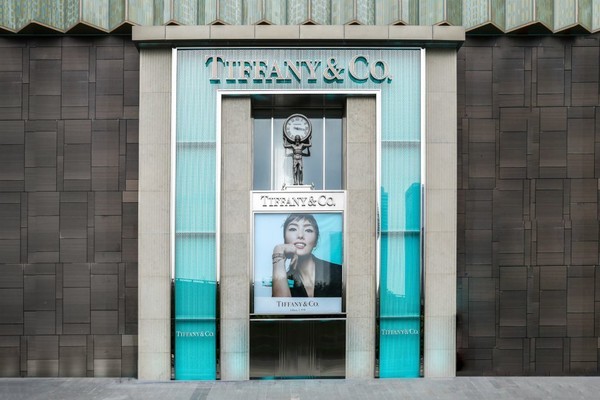
Image above:Т Tiffany's store at the China World Mall
For luxury brands who focus on the China market, digital marketing and online channels are the hot key words, while physical stores seem to be a forgotten topic. But there is no denying that physical stores are always the most effective vehicle to convey brand spirit and reflect the uniqueness of the brand.
Why did Tiffany open such a huge store in China this time? Does this new boutique herald the beginning of a new round of brick-and-mortar retail revolution in China?
Luxe.CO recently had an in-depth discussion with Philippe Galtie on the issues above.
New Architectural Language Expression
Immersive Retail Experience
"China, especially Beijing, is a very important market for Tiffany. We positioned this newly opened store as a flagship store because Beijing deserves it. This is where Tiffany's 'love story' with Chinese consumers began." Philippe Galtie told Luxe.CO.
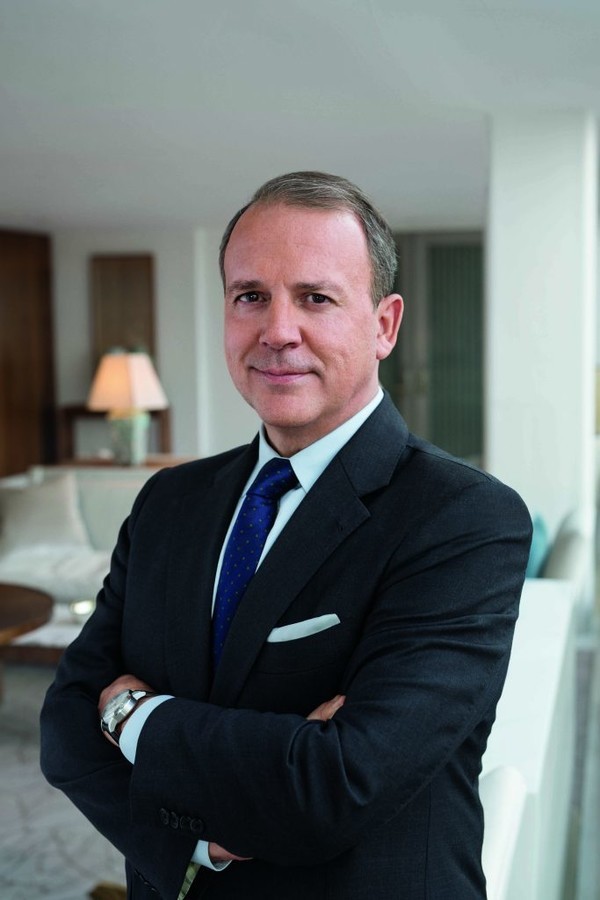
It is worth mentioning that after entering China for 18 years, Tiffany has now returned to Beijing, the starting point of the brand in the China market --- when Tiffany entered China in 2001, its first store was located in Beijing. With the opening of the China World Mall flagship store, Tiffany now has 35 stores in China across 22 cities.
It is not hard to see that the new store in Beijing is quite "innovative and subversive" for Tiffany. In addition to the continuation and inheritance of the brand history, it will focus on creating an interactive and personalized new retail experience
"You can think of it as a permanent exhibition of Tiffany," Philippe Galtie stressed in the interview. тThe goal is to present customers with the best image of the brand and provide an extremely immersive experience.т In his view, brick-and-mortar stores are the most effective touchpoints for communicating with consumers, and the real experience they bring cannot be replaced.

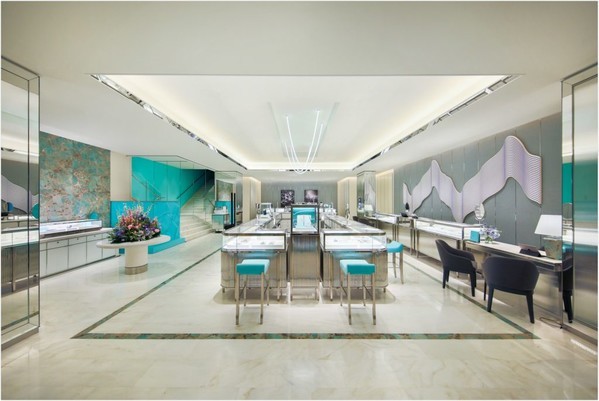
According to Philippe Galtie, "modern luxury" should be inclusive, meaning that luxury stores do not have to be very "formal". Indeed, Tiffany has been exploring a new brick-and-mortar retail style since last year, marked by the world's first launch of a Style Studio concept store in London, offering services such as customisation and vending machines.
Through a series of new attempts, Tiffany hopes to change the "mysterious and cold" image of traditional luxury stores and bring a "casual and informal" experience to consumers.This retail concept is gradually being rolled out on a large scale. Philippe Galtie told Luxe.CO that Tiffany's store refurbishment work will continue this year and that services such as "customisation" will be rolled out in more cities in China.
According to "China New Generation Fashion Consumption Report 2018т, when it comes to offline experience, consumers now have the highest demand for the addition of "personalized customization" in physical stores. Philippe Galtie agrees that today's younger consumers have a strong need for individuality as well as quality.
In the new flagship store in Beijing, a "Personalized Carving Area" is specially set up. Customers can carve personal information on diamond rings and other products according to their preferences, such as initials, letters, dates and other designs by themselves.
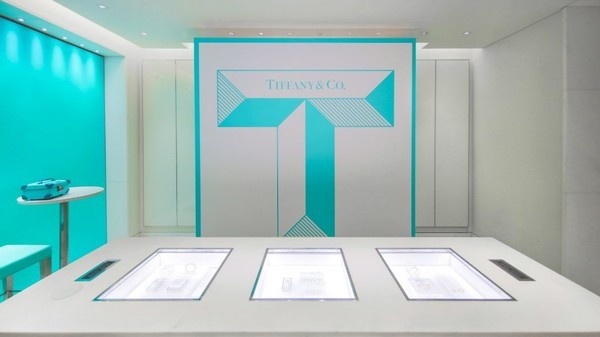
Image above:Т "Personalized Carving Area"
Tiffany also designed an "Art Display Area" specially for the new store in Beijing to display more cooperative works with artists, including the тDream of Chinaт series by Tiffany and Chinese artist Jin Wang, and the тRiver Rockт works by Tiffany and glass art master Jeff Zimmerman.
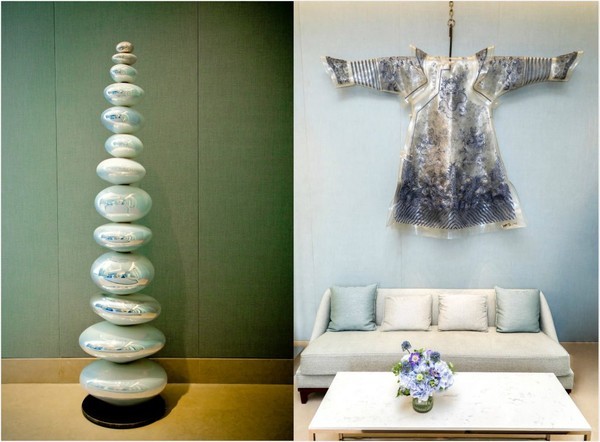
Image from left: тRiver Rockт works,Т тDream of Chinaт series

In addition, the new flagship store has added VIP rooms. In contrast to the modern style of the whole shop, the VIP room creates a warm and relaxing atmosphere.
With More Variety
Let Customers Embrace "Modern Luxury"
According to Philippe Galtie, the optimism and spirit of tolerance that originated from New York determines the unique positioning of Tiffany. This brand spirit is reflected in the product, which is to bring "everyday luxury" to the new generation of consumers by an extension of its product lines.
The retail area includes several of the brand's most representative collections, including Tiffany T, Tiffany True, Tiffany Keys, Tiffany Paper Flowers™, Tiffany HardWear, and fine jewelry, demonstrating the modern nature of Tiffany.
In addition to jewelry products, the store also has a special lifestyle area, displaying household items including tableware, pet products, leather goods, etc.

Philippe Galtie stressed that Tiffany hopes to reach every consumer not through the classification of consumer age, but through "different products with different combinations" to achieve brand value.Т
Fourteen years later, Tiffany relaunched its namesake perfume, which created significant sales in a short time. The Blue Box Cafe, which opened in October 2017 at the flagship store on New York's Fifth Avenue, is now a hotspot for social media influencers. From $1,000 bubble toys to the $10,000 wool balls, the тEveryday Objectsт series has been the hot topic on social media.
In order to continuously enhance product innovation and enhance efficiency "from creativity to finished products", Tiffany also set up an innovation factory in June last year, and now plans to launch the jewelry series incubated from this innovation factory in 2020.
Referring to the "Diamond Source Initiative" announced by Tiffany at the beginning of this year, Philippe Galtie emphasized that Tiffany is the only jeweler brand in the industry who has made the source information of diamonds public. In fact, the transparency of diamond source is critical -- Tiffany is the first in the industry to do so, which not only strengthens the brand, but also wins the goodwill of the new generation of consumers.
Tiffany's new store in Beijing has become a practitioner of the "Diamond Source Initiative". When customers purchase jewelry products at the counter, they can obtain the relevant information such as the origin of diamonds through corresponding display labels.
The Potential of Chinaтs Domestic Consumption Has Yet to Be Tapped
The Market for Fine Jewelry is Becoming Increasingly Competitive
According to the FY 2018 report released by Tiffany, the APAC region accounted for 28% of the total global sales in 2018, of which the Greater China region contributed 60% of the sales in the APAC region. As Philippe Galtie says, "China has become a critical part of Tiffany's growth."
The strategy behind the new store in Beijing stems from a brand innovation that Tiffany has been gradually implementing globally for more than a year. In March 2018, new CEO Alessandro Bogliolo unveiled six major plans to improve the physical store experience.

Judging from Tiffany's current performance, the reform has achieved initial results. For the FY 2018, Tiffany sales increased 7% year-on-year to $4.4 billion, the biggest increase since 2014, and net profit surged 58%.
Tiffany recently released its financial report for the first quarter of FY 2019, which showed that sales fell 3% year-on-year due to global exchange rate fluctuations and reduced consumption of tourists. This may mean that while Tiffany's reforms are beginning to show results, it's only the beginning and there are still many challenges. In the luxury jewelry market, with demand growing, more and more luxury groups focusing on leather and ready-to-wear products are now trying to break into the market.
According to Bain & Companyтs report, the jewelry category grew by 7% in 2018, which is one of the fastest growing categories in the luxury industry. Since this year, Gucci, Giorgio Armani and Prada have successively launched high-end jewelry series.
Tiffany said in its latest quarterly report that consumption in mainland China remained strong and sales continued to grow. In an earlier report on China's luxury market, Bain & Company pointed out that the recent trend of luxury consumption in mainland China will continue over the next few years. There is no doubt that for luxury brands, the potential of China's domestic market has yet to be tapped.
Clearly, now in its 18th year since entering the China market, Tiffany is using a brand new architectural language to express and localize the digital strategy to deepen the emotional connection with consumers, and broadly interpret the "Love and Dream" that the brand has always believed in.












Comments